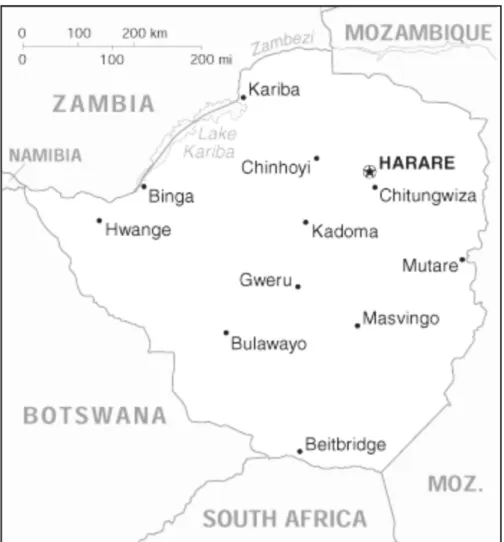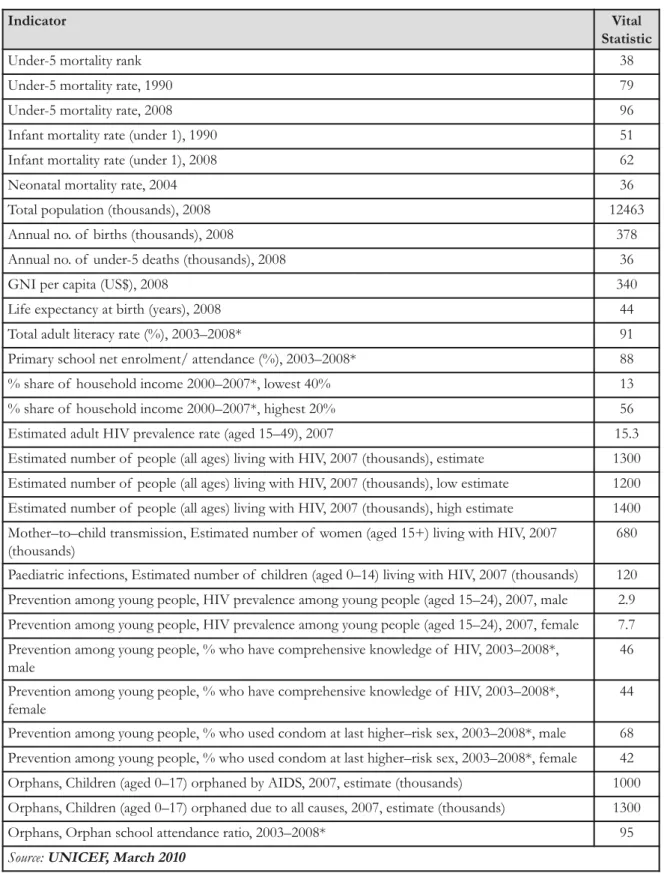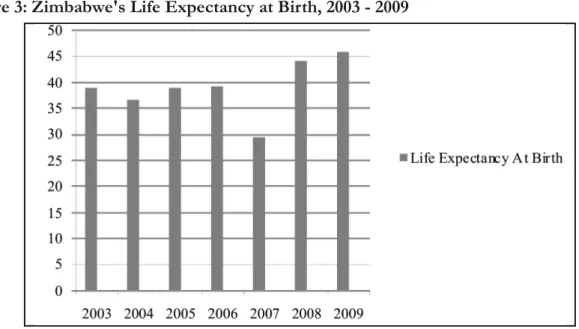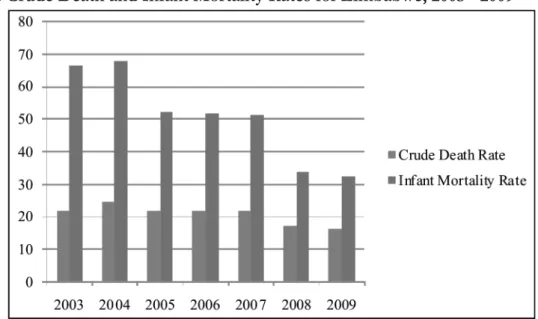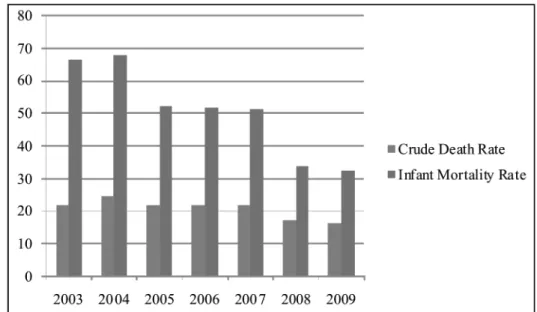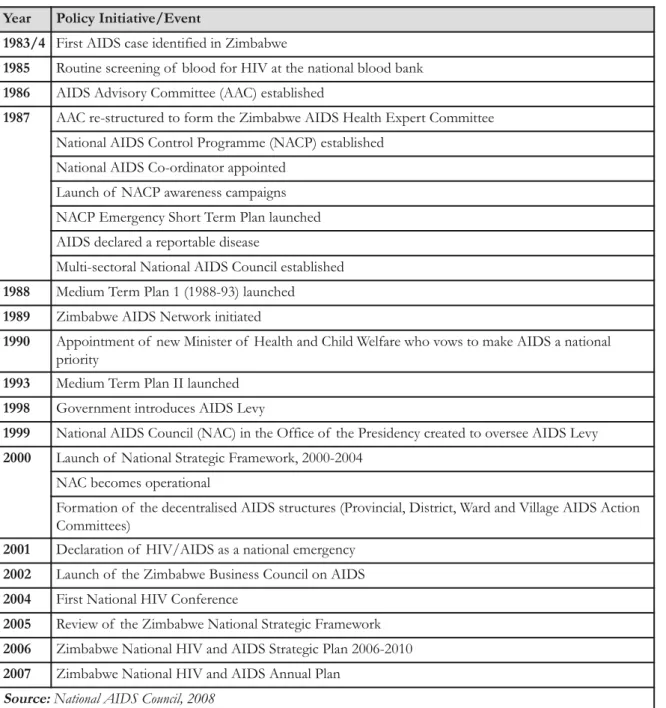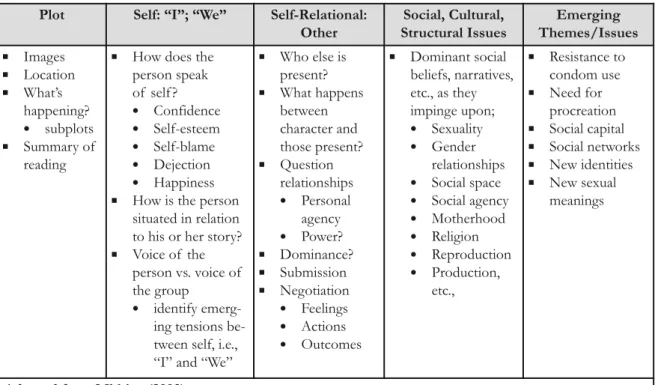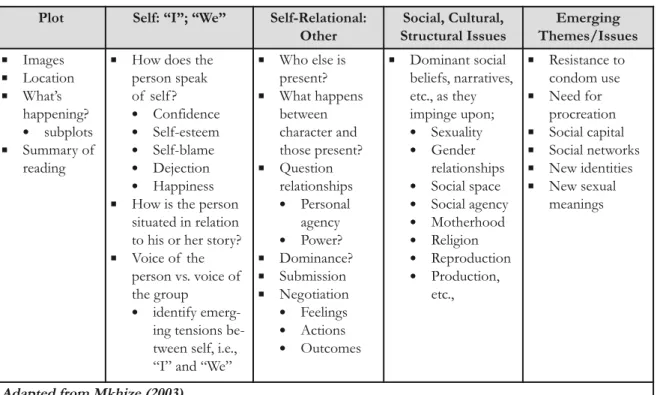There is a need to expand the HIV/AIDS research agenda by exploring the nuanced socio-cultural contexts within which mundane social and sexual encounters occur. Prevention efforts should be located in people's experiences and interpretation of their lifeworld, with particular attention to the language people use to make sense of the HIV/AIDS epidemic. Socioeconomic and Demographic Impacts of HIV/AIDS 19 Impact of HIV/AIDS on Children in Sub-Saharan Africa 20.
Data analysis: voice-centred relational method 85 Defining experiences: Narrator and story 87 Reading 1: Reading about the plot and my response.
CONCLUSION, IMPLICATIONS and FURTHER RESEARCH: GLOBAL EPIDEMIC, LOCAL
Conclusions about the research questions 132 Unique contribution of the study 134
The ecosystem theory: a proposal 136
INTERVIEW GUIDE FOR SEX WORKERS 192
INTRODUCTION
There is now considerable variation in the timing and intensity of the HIV epidemic in different regions of the world. However, there is still evidence of the negative impact of HIV infection on fertility in sub-Saharan Africa (Glynn, Buve, Caraél, Kahindo et al. 2000; Gregson, 1994; Terceira, Gregson, Zaba et al., 2003). An understanding of the ecological and social contexts of HIV infection is important in designing appropriate HIV prevention strategies.
HIV/AIDS: A GLOBAL SYNOPSIS
These studies have identified multiple and simultaneous sexual partnerships as key drivers of the epidemic in sub-Saharan Africa. An in-depth understanding of the forces and factors driving the spread of HIV/AIDS in sub-Saharan Africa will help create better-informed responses needed to tackle the epidemic (Green et al., 2009). The scale of the HIV/AIDS pandemic in sub-Saharan Africa requires more than just a national response.
HIV/AIDS in ZIMBABWE
Third, the government emphasized the centrality of the institution of marriage in the fight against HIV/AIDS. In 1987, the mushrooming of AIDS services in Zimbabwe led to the creation of the National AIDS Coordination Program (NACP). The HIV epidemic was also closely linked to poverty in the country (Pitts, 2001).
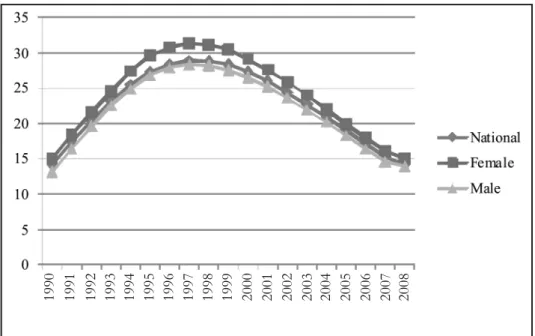
CULTURE and SEXUALITY
Parker et al. (1991, cited in Taylor, 1998, p.79) defines sexual culture as "the system of meaning, knowledge, beliefs and practices that structure sexuality in different contexts". They hypothesize that AIDS cases in Africa are driven by a sexual promiscuity similar to what—combined with recreational drugs, sexual stimulants, sexually transmitted diseases, and antibiotic overuse—produced the early epidemic of immunological dysfunction among a subculture of urban gay men in the West. Brewer et al. (2003) further argue that African sexual behavior is not in itself unique compared to the West or anywhere else in the world.
THEORETICAL PERSPECTIVES
Metz and Fitzpatrick (1992, p. 3) argue that in heterosexual relationships, “the reproductive and relational meaning associated with condoms” remains largely unexplored. So the individual mind (although experience) does not arise in this way by creating meaning, by creating language, or by discovering the nature of the world. Descriptions or constructions of the world therefore support some patterns of social action and exclude others.
This process involves the socialization of human beings into a socially maintained understanding of the world (Gergen, 1999). The same applies to the inseparability of the self from the other and the concept of intersubjectivity. The subjective interpretation of the linguistic world came to the fore in the world view.
It is governed by the grammar or logic of the language we are born into. By rigorously applying systematic empirical procedures, it is believed, one can come up with theoretical maps to successfully guide one's actions in the world (Gergen & Gergen, 1984). . The main drawback of metatheory is its incessant need to justify its premises. She believes: “The claims of each discourse are simply relative to each other and cannot be said to be either true or false compared to.
He argues that the strength of social constructionism lies in its rejection of the concept of objective truth.
STUDY METHODOLOGY
Reading for the plot and my response to the narrative
I listened for cultural metaphors, words, recurring images, and narrative tensions (Doucet & Mauthner, 1998). Some cultural metaphors focused on "good" and "bad" femininity and masculinity, illness and its causes, family tensions, social deviance, and punishment. I also read the text for myself in order to understand my background, history and experiences in relation to my respondent (Doucet & Mauthner, 1998; cited in Taylor, 1995).
I was an urban college graduate, and I assumed I was more informed about the HIV/AIDS pandemic. I never realized the closeness of the pandemic to my own life until I started listening to the stories and experiences. Figure 5 below captures the concept of reflexivity in my research process.
The social and cultural setting
As part of the data analysis process, I read transcripts of the interviews no less than thirty times over three years. I held numerous consultations with colleagues in the School of Psychology, University of KwaZulu-Natal, on some of the points that were either questionable or needed independent confirmation. The presentation of the data was strongly influenced by what Chenail (1995) called juxtaposition and rhythm.
At the heart of the model are the research questions, which in turn guide the conceptual framework of the study, the methods, aims and objectives (what Maxwell calls the purpose of the study), and the validity of the study. Coherence between the various components of the model is essential to the validity and reliability of the study. In terms of conceptual framework, my research began with a literature review of the impact of HIV and AIDS in Zimbabwe.
How are they (re)negotiating their normative roles in the face of the onslaught of HIV/AIDS. It should describe a portrait of the socio-cultural context surrounding the experience (Hogg & Abrams, 1990; Strauss & Corbin, 1990). Qualitative research allows the researcher to feel the data and understand the complexities embedded in the respondents' life stories.
She had a deeper understanding of the cultural life of the research area, but was not limited by the social tensions and dynamics of everyday life in the communities (Reinharz, 1992).
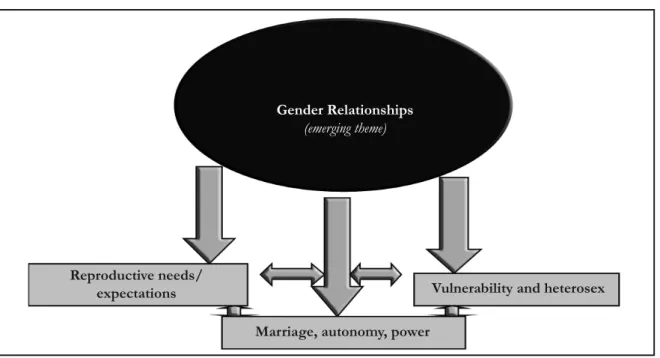
RESULTS and DISCUSSION: THE SOCIAL
CONSTRUCTION OF HIV/AIDS IN RURAL ZIMBABWE
Mitchell (ibid.) argues, "normative social expectations and women's embodied experience appear divergent". Bauni (1990) highlighted the social unrest resulting from changing sexual patterns in Kenya in the era of the HIV/AIDS epidemic. Tsitsi lost family and social support because he dared to challenge the status quo. The social and gender asymmetries found in the traditional status quo exclude women from support systems.
Young women in rural areas are at the crossroads of the old and the new social orders. The emergence of the moral-religious narrative is a critical factor in this study not simply because of "the effects of religious beliefs on individual health behaviors and outcomes [but] on religion as a social force that shapes social, cultural and institutional form responses to health. conditions and health differences". Since sexual activity is motivated by desire, Christian and biblical categorization of desire as sinful can place costs on sexual activity. The sexual analogs are simple: Sexual lust is excess in sexual intercourse, sexual gluttony is excessive love of sexual pleasure, and Sexual greed has more.
The influence of conservative Christian patriarchies and lobby groups on the abolition of C (condom use) has been debated (Green, 2008). Epprecht (1998, p. 634), speaking of the Shona people's functionalist approach to marriage and fertility, says: “The appearance of fertility was one of the most important elements in a proper marriage and in the social definition of adulthood for both men and women . For the sex workers, their biggest concern was the violence they encounter in the space they work in – the beer halls.
The study provided broad brushstrokes of the main narratives emerging in rural Zimbabwe related to HIV/AIDS.
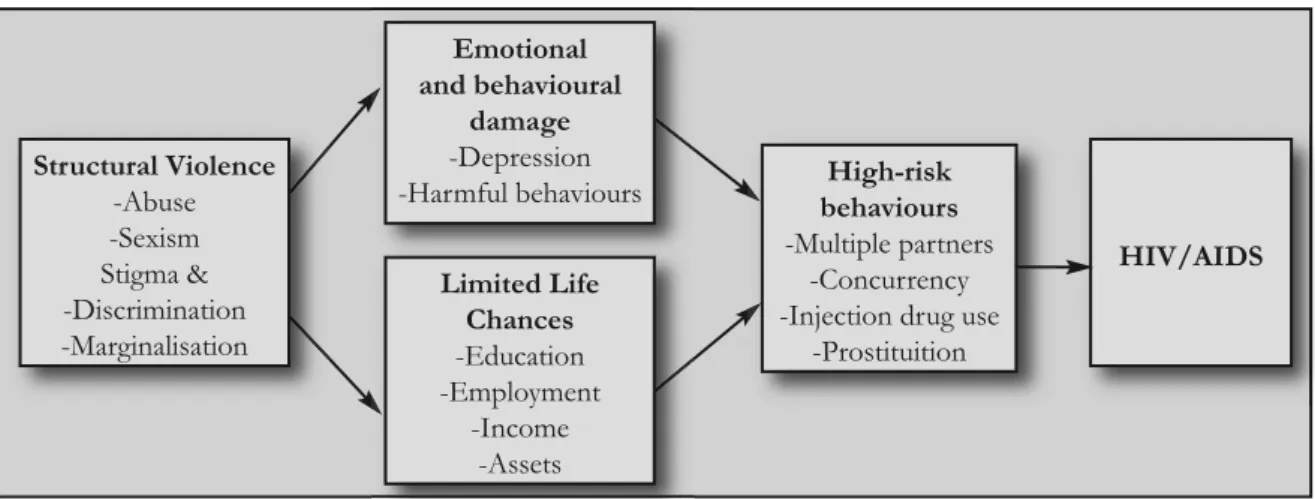
CONCLUSION, IMPLICATIONS and FURTHER RESEARCH: GLOBAL EPIDEMIC, LOCAL RESPONSES
The study specifically explored the social construction of HIV risk among Manyikapeople in Zimbabwe. I used it because I wanted to listen to the private voices of Manyikapeople separate from the dominant narratives of society. The most critical message is that HIV/AIDS is linked to many people's lived experiences.
The third key message is the dominance of the moral-religious paradigm in rural Manyika communities. On the other hand, the younger generation feels unnecessarily burdened by the trivial patriarchal habits of the old generation. The older generation blames the promiscuity of the younger generation for the emergence of diseases such as HIV/AIDS.
The final key message of the thesis is the notion of gendered space and the violence that arises from masculinity and patriarchy. A deep understanding of multidimensional, dialogical understanding (ie, the self that is always in contact with its surroundings, past and present) and a highly nuanced view of self-understanding in African societies can unlock the key to influencing in changing behavior in the face of the HIV/AIDS attack. Health educators who develop models and theories for HIV/AIDS prevention must consider not only the mutual inseparability of self and culture, but also interventions (Airhihenbuwa & Obregon, 2000).
The complexity and multidimensional nature of the African worldview, the attachment of the self to the social environment in particular, has led me to propose an ecosystem theory of understanding the self in African contexts.
CONSENT FORM
I am a PhD student at the School of Psychology, University of KwaZulu-Natal, South Africa. I am conducting a research study on HIV/AIDS prevention in Mutasa and Makoni districts of Manicaland. The local traditional and political authorities gave me permission to conduct the study.
Nationally, the Ministry of Health and Child Welfare approved the study. The University of KwaZulu-Natal Graduate Ethics Committee granted ethical approval for the study. You are neither forced to participate in this study nor to answer any question you do not feel comfortable answering.
Again, we are not doctors, but social scientists who are asking you about your perception of health issues, especially HIV/AIDS. The results of the study will be published as Tom Zhuwau's PhD thesis for submission to the University of KwaZulu-Natal in South Africa. However, the findings of the study will be disseminated in the form of scientific reports and feedback to the relevant structures.
If you have carefully read and understood this consent form and wish to participate in the study, please attach your signature below.
INTERVIEW GUIDE
Introduction: negotiating consent and interview conditions
Life history
General perceptions of health and ill health Personal health history

